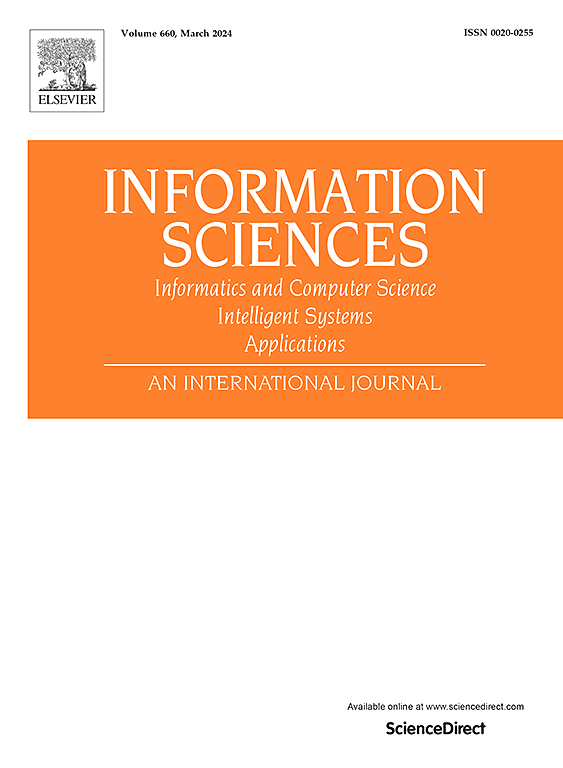用于鲁棒空中跟踪的轻量级实时判别Siamese深度耦合框架
IF 6.8
1区 计算机科学
0 COMPUTER SCIENCE, INFORMATION SYSTEMS
引用次数: 0
摘要
近年来,基于变压器的无人机(UAV)跟踪器取得了显著的成功。然而,计算量大的变压器模型将这些跟踪器限制在静态模板和浅骨干网络中,影响了它们的判别能力和定位精度。在这里,我们提出了一个新的判别暹罗深耦合框架。该框架构建了一种针对无人机场景的高空间分辨率轻量化细网格无锚连体跟踪器,并通过有针对性的在线鉴别器对其判别能力进行了补充。为了实现这一目标,通过知识转移开发了一种高效的干扰物检测器,能够有针对性地检测干扰暹罗跟踪器的干扰物。利用这些干扰物作为训练样本构建有针对性的在线鉴别器,该鉴别器与Siamese跟踪器深度耦合,增强了Siamese跟踪器的鉴别能力,特异性地抑制了阻碍跟踪性能的硬干扰物。此外,提出了一种领先的主子矩阵聚类样本空间模型和场景感知动态更新策略,对在线样本进行净化,并动态调度在线鉴别器更新,显著降低了在线鉴别器优化的计算成本,提高了跟踪器的实时性。最后,在8个无人机跟踪基准上的广泛实验表明,我们的跟踪器超越了最先进的基于变压器的无人机跟踪器,同时在CPU上实现70 FPS。本文章由计算机程序翻译,如有差异,请以英文原文为准。
Lightweight real-time discriminative Siamese deep coupling framework for robust aerial tracking
Recently, transformer-based Unmanned Aerial Vehicle (UAV) trackers have achieved notable success. However, the computationally intensive transformer model limits these trackers to static templates and shallow backbone networks, hampering their discriminative power and localization precision. Here, we propose a novel discriminative Siamese deep-coupling framework. This framework constructs a lightweight fine-grid anchor-free Siamese tracker with high spatial resolution specifically tailored for UAV scenarios, and complements its discriminative power with a targeted online discriminator. To achieve this, an efficient distractor detector is developed via knowledge transfer, enabling targeted detection of distractors that disturb the Siamese tracker. These distractors are utilized as training samples to construct a targeted online discriminator, which is deeply coupled with the Siamese tracker to enhance its discriminative power and specifically suppress hard distractors that hinder tracking performance. Additionally, a leading principal submatrix cluster sample space model and a scene-aware dynamic update strategy are developed to purify online samples and dynamically schedule the online discriminator update, significantly reducing the computational cost of the online discriminator optimization and boosting the tracker’s real-time performance. Finally, extensive experiments on eight UAV tracking benchmarks demonstrate that our tracker surpasses state-of-the-art transformer-based UAV trackers while achieving 70 FPS on CPU.
求助全文
通过发布文献求助,成功后即可免费获取论文全文。
去求助
来源期刊

Information Sciences
工程技术-计算机:信息系统
CiteScore
14.00
自引率
17.30%
发文量
1322
审稿时长
10.4 months
期刊介绍:
Informatics and Computer Science Intelligent Systems Applications is an esteemed international journal that focuses on publishing original and creative research findings in the field of information sciences. We also feature a limited number of timely tutorial and surveying contributions.
Our journal aims to cater to a diverse audience, including researchers, developers, managers, strategic planners, graduate students, and anyone interested in staying up-to-date with cutting-edge research in information science, knowledge engineering, and intelligent systems. While readers are expected to share a common interest in information science, they come from varying backgrounds such as engineering, mathematics, statistics, physics, computer science, cell biology, molecular biology, management science, cognitive science, neurobiology, behavioral sciences, and biochemistry.
 求助内容:
求助内容: 应助结果提醒方式:
应助结果提醒方式:


